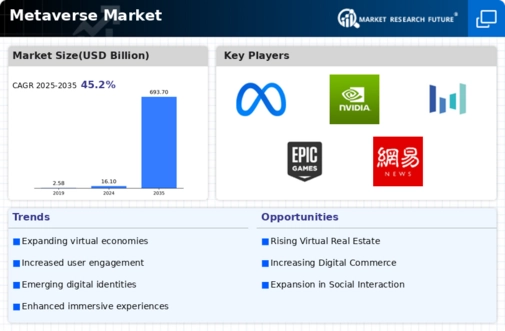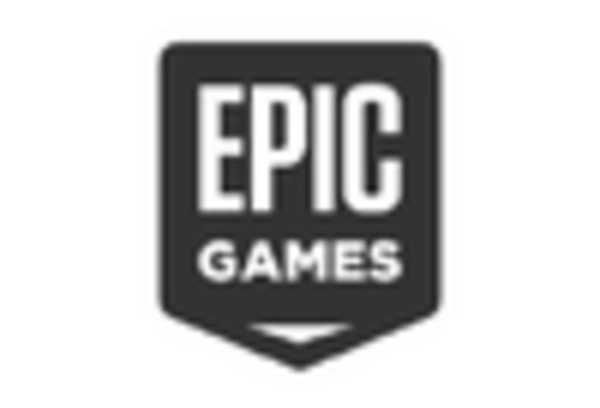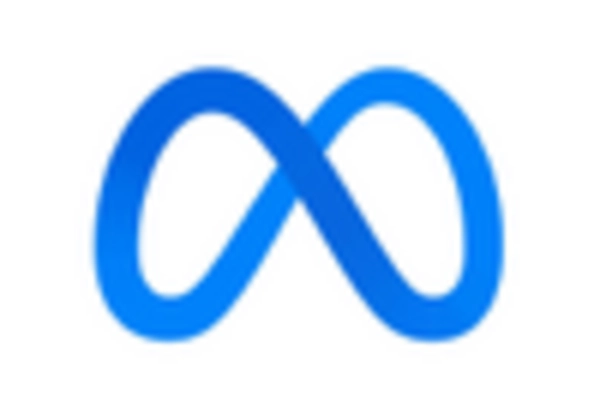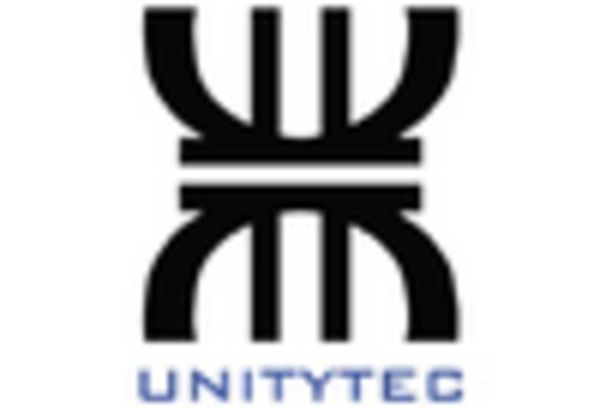Emergence of Hybrid Work Models
The Metaverse Market is being shaped by the emergence of hybrid work models, which blend remote and in-person collaboration. As organizations seek to create more flexible work environments, virtual spaces are becoming essential for meetings, training, and team-building activities. This trend is likely to drive demand for immersive collaboration tools within the Metaverse Market. Recent statistics suggest that companies investing in virtual collaboration tools are seeing improved employee engagement and productivity. As businesses continue to adapt to these new work paradigms, the Metaverse Market may witness accelerated growth, as companies seek innovative solutions to enhance their operations.
Rise of Decentralized Finance (DeFi)
The Metaverse Market is increasingly influenced by the rise of decentralized finance (DeFi), which offers innovative financial solutions within virtual environments. DeFi platforms enable users to engage in transactions without intermediaries, thus promoting financial inclusivity. This trend appears to be gaining traction, as the total value locked in DeFi protocols has reached substantial figures, indicating a growing acceptance of blockchain technology. The integration of DeFi into the Metaverse Market could facilitate new economic models, allowing users to earn, trade, and invest in virtual assets seamlessly. This shift may attract a diverse range of participants, from gamers to investors, further propelling market growth.
Advancements in Virtual Reality Technology
The Metaverse Market is experiencing a surge in advancements in virtual reality technology, which enhances user experiences and engagement. Innovations in hardware, such as headsets and haptic feedback devices, are becoming more sophisticated and affordable. This technological evolution is likely to attract a broader audience, thereby expanding the user base. According to recent data, the virtual reality segment is projected to grow at a compound annual growth rate of over 30 percent through the next few years. As these technologies become more accessible, they are expected to drive significant investment into the Metaverse Market, fostering new applications in gaming, education, and training.
Increased Focus on Digital Identity and Security
As the Metaverse Market expands, there is a heightened focus on digital identity and security. Users are becoming more aware of the importance of protecting their personal information in virtual spaces. This concern is prompting the development of advanced security protocols and identity verification systems. Companies are investing in technologies such as blockchain to enhance security measures, which could lead to increased trust among users. The market for identity verification solutions is projected to grow significantly, indicating a strong demand for secure environments in the Metaverse Market. This focus on security may ultimately drive user adoption and engagement.
Growing Interest in Digital Collectibles and NFTs
The Metaverse Market is witnessing a growing interest in digital collectibles and non-fungible tokens (NFTs), which are reshaping the way users interact with virtual assets. The popularity of NFTs has surged, with sales reaching impressive figures, indicating a robust market for unique digital items. This trend is likely to attract artists, creators, and collectors, fostering a vibrant ecosystem within the Metaverse Market. As more platforms emerge to facilitate the buying, selling, and trading of NFTs, the potential for economic growth within the Metaverse becomes increasingly apparent. This burgeoning interest may lead to innovative business models and revenue streams, further propelling market expansion.

















Leave a Comment